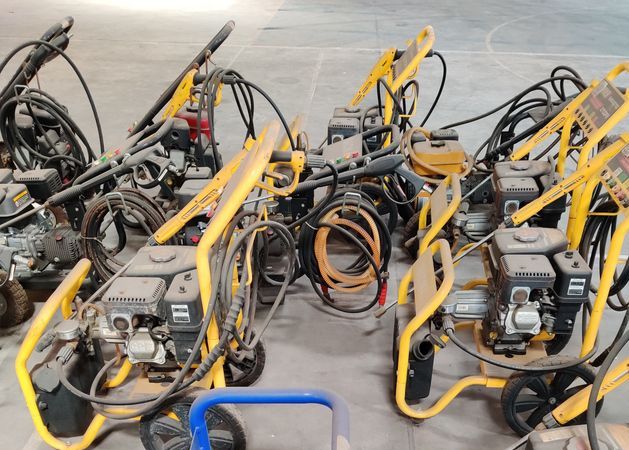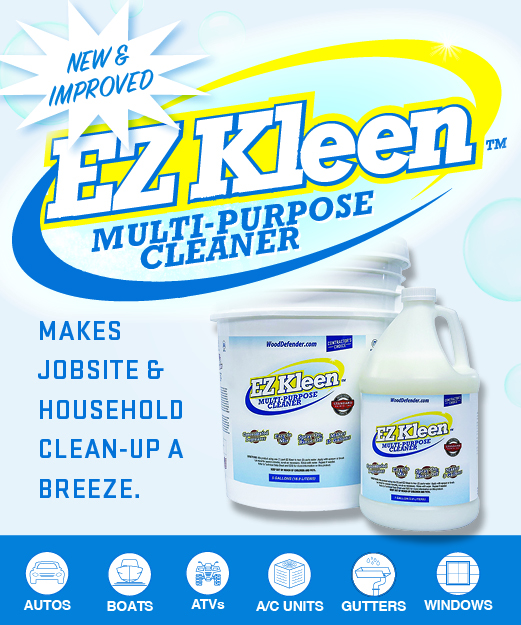
Pump Selection
by Diane Calabrese | Published July 2025

Which is the hardest working, most important and most overlooked mechanical device on our planet?
Let’s just say the pump is a genuine contender. Even in the biological world, the pump plays an essential role in the form of a heart.
Gravity can do a great deal. But for control over direction, amount, rate of flow and other particulars, movement of fluid depends upon pumps.
Given the specifics – exactly what we want to accomplish with the assist of a pump, it’s no surprise that there’s more to pump selection than saying ‘that one seems fine’. No better way to gain some grounding in how to think about pump selection than to get advice from two experts on pumps.
Making a match to the task is the priority. Two questions top the list of questions to ask, says Robert Piedade, director of e-Commerce at A.R. North America Inc. in Fridley, MN.
Piedade explains the questions are: “What flow rate and pressure are needed for the application? What is the best type of pump to achieve these requirements efficiently and reliably?”
Not taking time to answer the questions could cause problems. “The most common mistake [in choosing a pump] is not understanding the optimal flow and pressure required for the application,” says Piedade. “This often leads to under- or oversizing the pump, which can result in inefficient operation, increased energy consumption, and potential damage to the system.”
Forget pumps for a second and think about sizing and power in general. Yes, it might be possible to cut some hardwood branches – or at least notch them – with a small electric hedge trimmer, but the trimmer will suffer for it. Or think a small car trying to tow a big trailer.
We all have an intuitive grasp of power differences and how they must be respected. Yet often, pumps are seen as having a universal quality that other devices lack. They don’t.
The temptation to choose a pump that may not be an exact match to the task because it is less expensive should be thought through carefully. By making an investment on the front side, a pump owner can save a lot of trouble later.
To make a prudent pump choice, a buyer should understand the maintenance requirements and lifecycle costs of different types of pumps, says Piedade. “Understanding these aspects can help in making a more informed decision that balances initial investment with long-term efficiency.”
There’s always a lot going on in the sphere of pumps – and there always has been. The many initiatives to develop a solar-powered pump that will match the power of an electric-powered pump is one.
“Solar-powered electric motor pumps have made significant advancements and can be very effective, especially in remote or off-grid locations,” says Piedade. “However, they still face limitations such as dependence on sunlight and higher initial costs.
“Plug in electric-powered pumps generally offer more consistent performance and higher power output, making them more suitable for demanding applications,” continues Piedade. “A hybrid solution would be a battery system, one that can be charged and then remotely operated, or plugged in and operated.”
And such a hybrid system has been developed by Piedade’s company. [The basics, he says, are these: Annovi Reverberi, North America has developed such a system Product ranges from 2.5 to 11 ebhp, with a 1-2 hr. on trigger use range. (The ebhp designates equivalent boiler horsepower.)]
Thinking broadly about the future of solar pumps – as stand-alone and in hybrid configuration, Piedade takes the long view of where we are and how we got here.
“Every pump ever used by mankind has been solar-powered,” says Piedade. “Whether the power source is electric – [sourced from] coal, hydro, nuclear, natural gas, photovoltaic panels, etcetera, [or] gasoline, or diesel, it all started with nuclear fusion and the resulting elements and electromagnetic radiation created by a star.”
And, no, gravity is not forgotten. “You could make an argument that wind- and tidal-generated electricity aren’t 100 percent solar because gravity plays a significant role in those but I’m pretty sure we wouldn’t have either without the sun,” says Piedade.
In an oblique way, thinking about the power that ultimately gets exploited by a pump and its relation to the environment reminds us that the context where a pump will operate should be a consideration in pump selection, too.
Herein, we reduce pump selection to fundamentals. We assume water is being moved – as opposed a liquid with a different viscosity. We assume all other links in the system – e.g., pipe size, have been assessed. In short, we assume a lot of uniformity, which is generally true with pressure washer components, but we acknowledge there is a great deal of variation. Design engineers for pumps work with a matrix and not an either-or scheme to arrive at an optimal choice.
Good advice continues…
Let’s stay with the environment of a pump as we begin this section. “The operating environment is frequently overlooked but should always be a consideration when selecting a pump,” says Derek Majewski CFPS, marketing and business development specialist at Cat Pumps in Minneapolis, MN.
An example or two? “[Using] stainless steel or anodized components in corrosive or coast areas is essential to ensure durability,” says Majewski. “Implementing freeze protection safeguards in cold climates is critical to prevent damage. “Additionally, dusty or debris-filled environments may require a protective closure for the pumping equipment.”
Taking into consideration the pumping environment – and compensating for it, is a must. Not doing so “can significantly impact the pump’s longevity, maintenance frequency, and potential downtime,” says Majewski. In basic terms, no pump owner wants to experience the premature failure, voided warranters or unexpected repair costs that could result.
[In the broadest sense, the environment of the pump should include the internal environment as well as the pump’s surroundings. Is hot water going to be in the mix? Is the pump going to be a component on a steam cleaner?]
When making the initial selection of a pump, the ‘more is better’ outlook must be put aside. “One common mistake is focusing only on a pump’s, or high-pressure system’s, maximum pressure rating, thinking more pressure automatically means better cleaning,” explains Majewski.
“While pressure is essential, it’s not the only thing that matters,” says Majewski. “Both pressure (psi) and flow (gpm) work together to provide real cleaning power.”
A balanced setup is one that fits the job, explains Majewski. “Flow is especially important in industrial and surface cleaning but often gets overlooked when choosing a pump.”
Contractors know from experience how important flow is to remove surface dirt. High psi alone is not the best approach. Balance, as Majewski says, is essential.
To get started on making the selection of a pump best suited for routine use, answer two questions, says Majewski: “What is being cleaned and how long will it take? What are the available power sources and site conditions.”
Take the two questions in turn.
What and how long? “Larger jobs require larger pumps and more continuous operation, while smaller pumps have shorter duty cycles,” say Majewski. “Daily commercial cleaning would be better suited to large, slower belt-drive pumps, while smaller jobs can utilize smaller, direct-drive pumps.”
Power sources and site conditions? “Access to a strong, electrical power source can be excellent for applications in industrial areas, where a pump is commonly a building or maintenance department fixture,” says Majewski.
“Mobile cleaning applications often use the vehicle’s electrical or hydraulic power supply to drive a motor or frequently power equipment with an internal combustion engine,” explains Majewski. “The amount and type of power available can limit the power available to drive the pump, and therefore, it is a significant consideration in pump selection.”
Long before the first pressure washer incorporated a pump, the scope of tasks accomplished with the help of pumps was enormous. Many of the tasks, such as water for irrigation, movement of potable water, and sewage consolidation, contributed to great improvements in health and wellbeing.
An off-grid power source for pumps that’s predictable and strong would accelerate the living conditions of people everywhere. (In many ways, our use of pumps in conjunction with cleaning in developed nations is on the ‘luxury’ end of the spectrum of uses for pumps.)
So, what does Majewski think about the advances being made with solar-powered pumps? Like Piedade, he sees us as on the way to a good and promising outcome.
“Solar-powered pumps are making progress but are unlikely to rival electric-powered pumps in raw power for high-demand, continuous-use cleaning applications in the near future,” says Majewski. “This limitation arises from factors such as panel size, available sunlight, battery storage constraints, and the instantaneous power draw required by high-pressure systems.”
Constraints acknowledged, Majewski falls into the firmly optimistic category. “[Solar-powered] pumps are gaining traction in remote, off-grid, or environmentally sensitive areas where portability and energy independence are crucial. They are well-suited for low-flow, intermittent use; however, electric, gas/diesel, and hydraulic options will continue dominating industrial-scale cleaning until significant storage and conversion technology advancements occur.”





